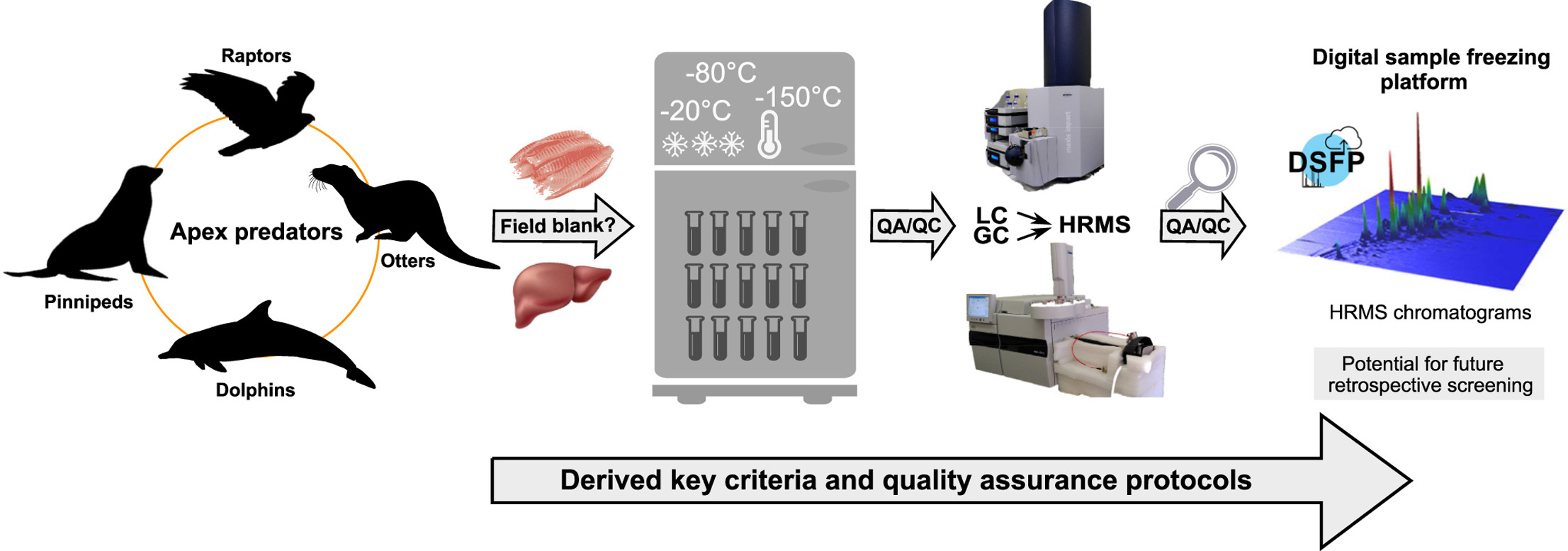Making use of apex predator sample collections: an integrated workflow for quality assured sample processing, analysis and digital sample freezing of archived samples
Badry, Alexander; Rüdel, Heinz; Göckener, Bernd; Nika, Maria-Christina; Alygizakis, Nikiforos; Gkotsis, Georgios; Thomaidis, Nikolaos S.; Treu, Gabriele; Dekker, Rene W. R. J.; Movalli, Paola; Walker, Lee A.; Potter, Elaine D.; Cincinelli, Alessandra; Martellini, Tania; Duke, Guy; Slobodnik, Jaroslav; Koschorreck, Jan
Chemosphere , 209 (2022), 136603, online 26. September 2022
Abstract
Using monitoring data from apex predators for chemicals risk assessment can provide important information on bioaccumulating as well as biomagnifying chemicals in food webs. A survey among European institutions involved in chemical risk assessment on their experiences with apex predator data in chemical risk assessment revealed great interest in using such data. However, the respondents indicated that constraints were related to expected high costs, lack of standardisation and harmonised quality criteria for exposure assessment, data access, and regulatory acceptance/application.
During the Life APEX project, we demonstrated that European sample collections (i.e. environmental specimen banks (ESBs), research collection (RCs), natural history museums (NHMs)) archive a large variety of biological samples that can be readily used for chemical analysis once appropriate quality assurance/control (QA/QC) measures have been developed and implemented. We therefore issued a second survey on sampling, processing and archiving procedures in European sample collections to derive key quality QA/QC criteria for chemical analysis. The survey revealed great differences in QA/QC measures between ESBs, NHMs and RCs. Whereas basic information such as sampling location, date and biometric data were mostly available across institutions, protocols to accompany the sampling strategy with respect to chemical analysis were only available for ESBs. For RCs, the applied QA/QC measures vary with the respective research question, whereas NHMs are generally less aware of e.g. chemical cross-contamination issues.
Based on the survey we derived key indicators for assessing the quality of biota samples that can be easily implemented in online databases. Furthermore, we provide a QA/QC workflow not only for sampling and processing but also for the chemical analysis of biota samples. We focussed on comprehensive analytical techniques such as non-target screening and provided insights into subsequent storage of high-resolution chromatograms in online databases (i.e. digital sample freezing platform) to ultimately support chemicals risk assessment.
doi: 10.1016/j.chemosphere.2022.136603
